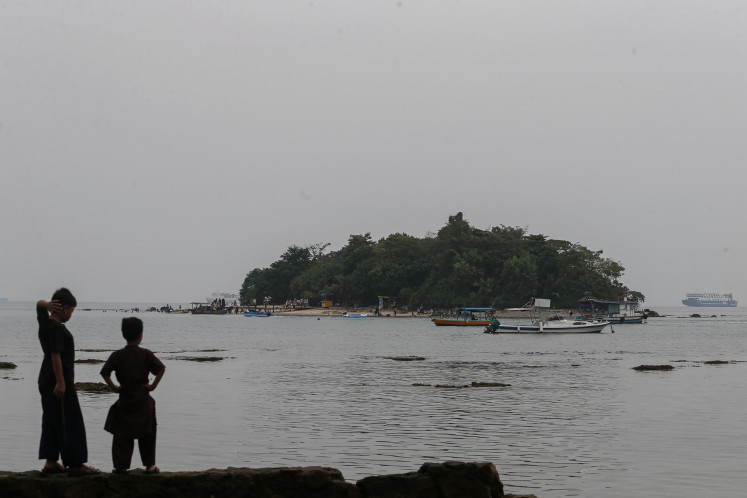Popular Reads
Top Results
Can't find what you're looking for?
View all search resultsPopular Reads
Top Results
Can't find what you're looking for?
View all search resultsAnalysis: Keeping pace ' Indonesia SME transformation still miles away
The drive for Indonesian businesses to look to information technology (IT) to transform their businesses has never been more apparent than right now
Change text size
Gift Premium Articles
to Anyone

The drive for Indonesian businesses to look to information technology (IT) to transform their businesses has never been more apparent than right now.
In the face of a flailing rupiah, slowing gross domestic product (GDP), low infrastructure spending, heightened inflation and the introduction of policies and regulations that cause higher operational expenditure (opex) among some of the issues faced by businesses today, IT has never looked more appealing for businesses wanting to reduce their overall business costs, increase profitability and heighten productivity of their existing workforces.
By the end of 2014, International Data Corporation (IDC) Indonesia anticipates that IT spending in the country will achieve US$16.8 billion ' charting 12.5 percent year-on-year growth, with close to half of that IT spending coming from the consumer segment. For the purposes of this topic, let us leave the consumer discussion to another article, which leaves us with approximately $9 billion of IT spending to discuss.
Indonesia is still a predominantly hardware-driven country, with more than 85 percent of IT spending occurring in the hardware category as storage, servers, client devices, printers, projectors and other similar items, which represents the highest bulk of purchasing from both enterprises and small and medium enterprises (SMEs). Media and communications, banking, finance and insurance (BFSI), and manufacturing represent the top sectors when it comes to IT spending, accounting for more than $1 billion. The spending in these verticals is heavily driven by cost pressures, and the ultimate need is to expand their markets in the wake of hyper-competition. Now with all this said, it is clear that the majority of business IT spending comes from larger enterprises, with both the media and communications and BFSI verticals taking up more than $5.5 billion in IT spending. This leaves a segregation of $3.5 billion spread across the remaining verticals.
All this gets much smaller when we bring it down to an SME level, and that's where IDC's best estimates show that by the end of 2014, SME spending (taking an arbitrary definition of fewer than 100 employees) will achieve $1.1 billion across all industries. This is where all the issues begin, in the definition of an SME. The Indonesian government has determined that SMEs in the market are defined by their annual sales as per the following levels: Small-annual sales of Rp 300 million on up to a maximum of Rp 2.5 billion, while medium businesses have annual sales of Rp 2.5 billion up to a maximum of Rp 50 billion.
Based on IDC surveys, very few IT vendors hold true to the definitions listed above. The majority of IT vendors prefer to follow their own definition of the SME market, and this has led to major confusion among end-user SMEs. Let me explain why.
Imagine a scenario where you are an SME that is trying to get ahead in its business. You have employed a total of 10 individuals in the organization, and your first order of business is to ensure you have basic necessities. In excluding a physical presence, the basic necessities might encompass the following: fixed phone line, network connectivity, desktops/laptops, a basic inkjet printer (or maybe rent a multi-function one) and/or a projector. Your largest concern in the business is ensuring salaries are paid monthly, as you live from month to month attempting to get enough business to offset whatever costs in terms of capital expenditure (capex) and opex you might have.
Now, feed into the scenario telecommunication providers, IT providers and technology providers who are offering you products and solutions to help you achieve that elusive discussion of 'cost-savings' so that your profitability increases over time. The issue now, from the telecoms provider to the IT provider and the technology provider, is the products/solutions provided by each will differ in maturity. Each of these providers has a definition of its own regarding SMEs and, therefore, the strategy adopted by each of them may be a 'copy and pasted' ideal from a neighboring country.
All this serves to confuse an already less-than-enthused SME market, especially one that is usually categorized as a 'first-time buyer'. IDC Indonesia's survey feedback has shown that the majority of SMEs in the market feel that vendors do not take into account their individual nuances, and that there is too much of a 'copy and paste' strategy being applied that lacks a true understanding of the difficulties they face ' and we have not even started to delve into the discussion of geographical nuances across the entire archipelago.
This being said, IDC Indonesia anticipates that IT spending in the SME segment will continue to flounder, as the majority of them continue to come to grips on what they truly require versus what will be 'additional costs' for them. For SMEs, costs are the primary concern about any form of IT, be it a product or solution. As more and more of these SMEs begin partnering or become part of an ecosystem of global multinational corporations (MNCs) investing in the country, the inadvertent need for them to 'computerize' is inevitable; however, understanding what type of solution is required will be critical. The push for them to adopt a form of cloud computing or mobility solution may be slightly far-fetched at this point. Instead, more work should be done to truly understand where they are in their businesses and what is required to get them to the next level. The total number of SMEs is vast; the last unofficial count showed more than 48 million SMEs in the country as of the end of 2012, which contribute more than 50 percent to the country's total GDP. It is no wonder many IT vendors see the SME market as a cornerstone of opportunity, but IDC Indonesia postulates that more work and effort is required in order to educate, raise awareness and drive the SME market to transform and to view IT as an integral part of its existence.
_____________
The writer is the country director of IDC Indonesia









